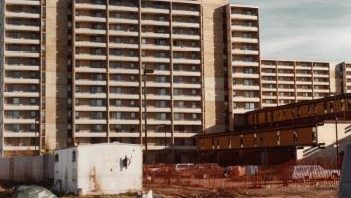Mayor Don Scott will be writing Alberta’s Indigenous Relations Minister, Richard Feehan requesting a meeting of all parties determined appropriate to discuss options regarding the Moccasin Flat evictions.
Council decided to look into requesting an inquiry into Moccasin Flats and collaborate with the Indigenous communities of the region to learn about the impacts of the evictions and opportunities for reconciliation at a special council meeting on July 10, 2018.
They met again on Oct. 24, 2018 for another special meeting and to hear a presentation from Researchers Hereward Longley and Tara Joly who were commissioned by the McMurray Métis in April 2018 to prepare a report on the events that occurred on the settlement in the late 1970s and early 1980s.
The 110 page report, The Moccasin Flats Evictions: Métis Home, Forced Relocation, and Resilience in Fort McMurray Alberta, says at the time, the Municipality and the housing subsidiary of oilsands giant Syncrude, Northward Developments Ltsd., collaborated to evict the Moccasin Flats families to make way for an apartment building, known today as the Syncrude towers, and a marina, which was never built.
The evictions took place around Jan. 22, 1979 when the residents of Moccasin Flats were invited to a meeting while their houses were bulldozed and then later burned.
Tara Joly outlined the effects the evictions had on the residents of Moccasin Flats as seen through the report.
“Being evicted from this home had cultural and socioeconomic impacts for the evicted families as well as being a source of intergenerational trauma for the families and the wider community.”
Bill Loutit, CEO of the McMurray Métis told Council these findings were troubling.
“The actions by Northward and the new town of Fort McMurray are infuriating, out hope is that it will lead to actions today that this council and us can continue to work together to reconcile what happened and move forward in a correct direction for everyone involved.”
Suggestions for reconciliation indicated in the report include financial compensation for the families of the evicted as well as land transfers, a monument to commemorate the history of the evictions, building a métis cultural centre, a land transfer to the McMurray Métis, reconstructing the Snye dike to allow water to flow, education programs to teach cultural competency, further research and a formal apology to families evicted and to the broader community.
At the meeting it was also made clear that representation from Syncrude be present at the meeting with Minister Feehan.
According to the Truth and Reconciliation Commission of Canada each person, company and organization in the RMWB has a responsibility towards reconciliation regarding the evictions.
Loutit told Council what the McMurray Métis would like to see happen now.
“We would like to see a simple, quick settlement… something that we can work at with the city in a new relationship, put together a cultural centre to be able to work at things going forward,” said Loutit. “The purpose of this report was to come to some reconciliation with the Municipality and to be able to move forward in the future, together.”
He said the McMurray Metis could use a piece of land close to the river to build a world-renowned cultural centre to show the rich history of the Métis and allow for collaboration on projects with the Municipality.







